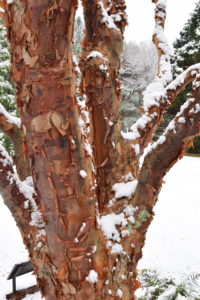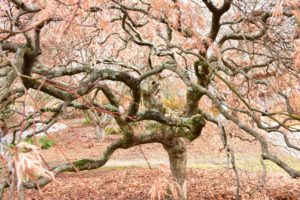Plants for the Winter Landscape
go.ncsu.edu/readext?640272
en Español / em Português
El inglés es el idioma de control de esta página. En la medida en que haya algún conflicto entre la traducción al inglés y la traducción, el inglés prevalece.
Al hacer clic en el enlace de traducción se activa un servicio de traducción gratuito para convertir la página al español. Al igual que con cualquier traducción por Internet, la conversión no es sensible al contexto y puede que no traduzca el texto en su significado original. NC State Extension no garantiza la exactitud del texto traducido. Por favor, tenga en cuenta que algunas aplicaciones y/o servicios pueden no funcionar como se espera cuando se traducen.
Português
Inglês é o idioma de controle desta página. Na medida que haja algum conflito entre o texto original em Inglês e a tradução, o Inglês prevalece.
Ao clicar no link de tradução, um serviço gratuito de tradução será ativado para converter a página para o Português. Como em qualquer tradução pela internet, a conversão não é sensivel ao contexto e pode não ocorrer a tradução para o significado orginal. O serviço de Extensão da Carolina do Norte (NC State Extension) não garante a exatidão do texto traduzido. Por favor, observe que algumas funções ou serviços podem não funcionar como esperado após a tradução.
English
English is the controlling language of this page. To the extent there is any conflict between the English text and the translation, English controls.
Clicking on the translation link activates a free translation service to convert the page to Spanish. As with any Internet translation, the conversion is not context-sensitive and may not translate the text to its original meaning. NC State Extension does not guarantee the accuracy of the translated text. Please note that some applications and/or services may not function as expected when translated.
Collapse ▲Despite what the calendar says regarding the official start of winter, for me a prime indicator that fall has passed and winter has arrived is the blooming of native witch hazel. These shrubby plants found in the woods have curious flowers resembling shredded yellow paper. These fragrant flowers will persist for some time. It is one of many plants that bring interest to the winter landscape.
The winter landscape eschews the flashy flowers of spring. But instead relies on subtle attractions and sharper views. Nevertheless these elements still are strongly appealing. Gone are the leaves that mask the interesting architecture of trees like weeping Japanese maples and Harry Lauder’s walking stick. Some trees have unusual bark qualities that add an extra element of interest. Trees like paperbark maple, river and paper birch and kousa dogwood have exfoliating bark. Red and yellow twig dogwoods and a few Japanese maples have brightly colored stems. And just clearer views of the texture and color of bark from sourwoods, tulip poplars and oaks are very engaging.
Dried flower and seed heads of hydrangeas, clethra, sedums and grasses that remain in the garden add beauty. Some of these can also be food sources for foraging birds that hang out through the winter. Deciduous hollies display berries in winter that are not only attractive but can also draw in birds.
Winter is a time for conifers to shine and stand out next to their bare deciduous cousins. Many varieties and forms of pines, firs and false cypress and others provide contrast to the naked stems of other plants.
Flowers are not completely absent from the winter landscape. Winter jasmine, a scrambling shrub, will burst out in a chorus of yellow flowers in January. Edegworthia is a surprisingly wonderful shrub that displays a cluster of creamy flowers on their mid-winter bare sticks. The sweet fragrance is often the first thing you notice on this plant. While this is a zone 7 plant, they can do well planted in a protected spot in zone 6. Hellebores—first Christmas rose, then Lenten rose will bloom in an impressive range of colors, from white to purple to black and stay in bloom into spring. Even on the coldest of days, camellias boldly show off their colorful blooms.
Not too long into winter, bulbs will emerge such as snow drops, crocus, and early irises followed by daffodils and many more that indicate spring is not very far off. And the cycle continues.







